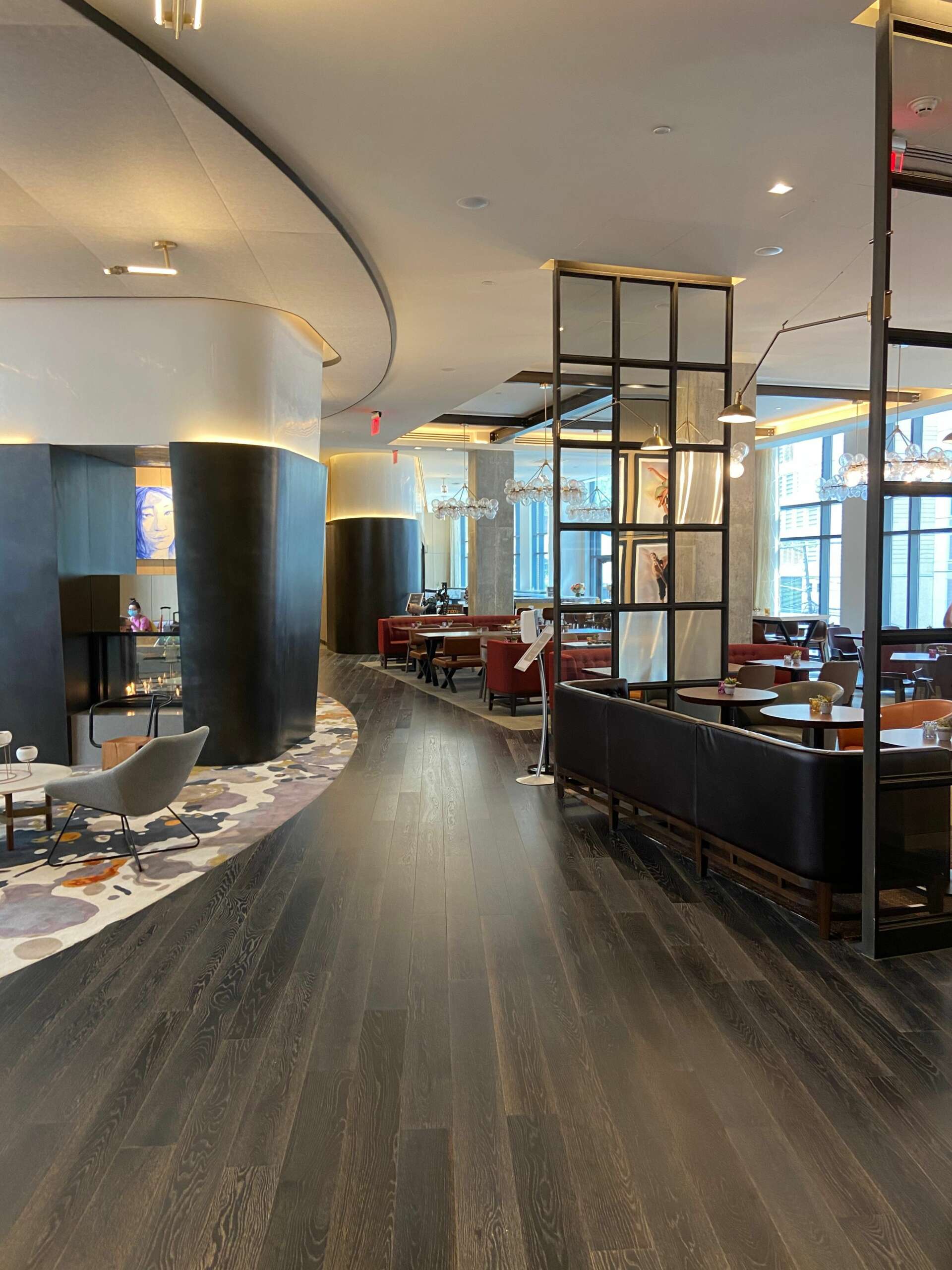We were lucky to catch up with Hao Wu recently and have shared our conversation below.
Hi Hao, thanks for joining us today. Are you happy as a creative professional? Do you sometimes wonder what it would be like to work for someone else?
I am an interior designer dedicated to helping my clients create their dream spaces. Early in my career, I believed interior design was solely about shaping physical spaces. Now, I understand that what I truly do is craft ideal lifestyles.
In addition to being a designer, I am also an artist who nurtures creativity as a passion. In July, I began exploring watercolor and committed to a “100 Watercolor Challenge” to master the technique. Within three months, I completed the challenge and shared my journey with colleagues during a gallery night event, gifting them my paintings. For me, art is about sharing emotions—each piece carries the joy and struggles of my learning process. Through this connection, those who receive my work experience the moments I lived while creating it.
My most meaningful collection is “The Cities,” originally titled “12 Cities.” This series began during the global lockdown, as I reflected on cherished memories of traveling—capturing the breathtaking views, vibrant atmospheres, and unique character of each city I visited. Over time, the collection grew beyond my own travels to include commissioned works of cities like Rio de Janeiro, Chicago, and Chongqing.
I constantly explore different artistic styles and media, from calligraphy to photography, which has elevated my hobbies into professional pursuits. This mirrors my approach to design—though my primary focus is hospitality, I actively seek opportunities to push boundaries and work on diverse project types, including workspaces, mixed-use developments, residential properties, and entertainment venues. Expanding my creative and professional scope enriches my ability to innovate and adapt.
One of my most fulfilling projects was designing the Canopy by Hilton Jersey City Arts District, a 211-room hotel at 159 Morgan Street, the first of its kind in the NYC Metropolitan Area. Positioned as an art hub within the city, this project deepened my appreciation for art and design. It taught me that a space doesn’t just display art—it can become part of the art itself.
This philosophy has shaped how I approach both my design and artistic work. Together, they form a creative language that transforms spaces and leaves a lasting emotional connection.

Hao, before we move on to more of these sorts of questions, can you take some time to bring our readers up to speed on you and what you do?
I am an interior designer with a background in architectural design, which I practiced in China before transitioning to my current focus. My work primarily revolves around hospitality projects, including hotels, restaurants, and retail spaces. In addition, I work on a diverse range of projects, such as workspaces, entertainment venues, and mixed-use developments.
Beyond design, I am also an artist, calligrapher, and photographer. The variety in project types, sizes, and locations has sharpened my perspective and given me a refined, high-level eye for design. This diversity fuels my passion and enthusiasm for creating thoughtful, impactful spaces.

What can society do to ensure an environment that’s helpful to artists and creatives?
The overall environment in the USA is better for creatives compared to where I used to live, but it’s still difficult for artists to thrive. Selling artwork remains a challenge. To make a living from art, I often face a tough choice: do I create something that speaks to my personal passion or something that fits market demands?
As a designer, I encounter a similar question. My primary job is to help clients realize their dreams, not my own. This often means working within constraints—time, budget, or practicality—which limits the space for exploration and self-expression.
I believe the economy plays a significant role in shaping opportunities for artists and designers. A stronger economy can create more demand for art, design, and creativity, while art itself has the power to drive economic growth by fostering innovation, tourism, and cultural development.
For a thriving creative ecosystem, society needs to invest in resources that support artists and designers. This includes:
Funding: Grants or subsidies to ease financial burdens and allow artists to focus on their craft.
Affordable Spaces: Studio or gallery spaces that are accessible, especially in urban areas where costs are prohibitive.
Arts Education: Introducing art as a vital subject early in schools and making advanced resources available to develop the next generation of creatives.
Community Engagement: Encouraging collaboration between artists, businesses, and local governments to integrate art into public spaces and everyday life.
These changes wouldn’t just support artists—they’d also benefit society as a whole by making art more visible, appreciated, and accessible. A society that values and invests in creativity sees returns in innovation, cultural identity, and economic vitality.

What do you find most rewarding about being a creative?
As a designer, there’s nothing more fulfilling than seeing my work come to life. The moment I step into a completed space and witness the happiness and awe of its users—that’s the ultimate reward. Knowing that the design has positively impacted their experience is what makes all the hard work worthwhile.
Contact Info:
- Instagram: haowu_design
- Linkedin: https://www.linkedin.com/in/haowu1987






Image Credits
n/a


